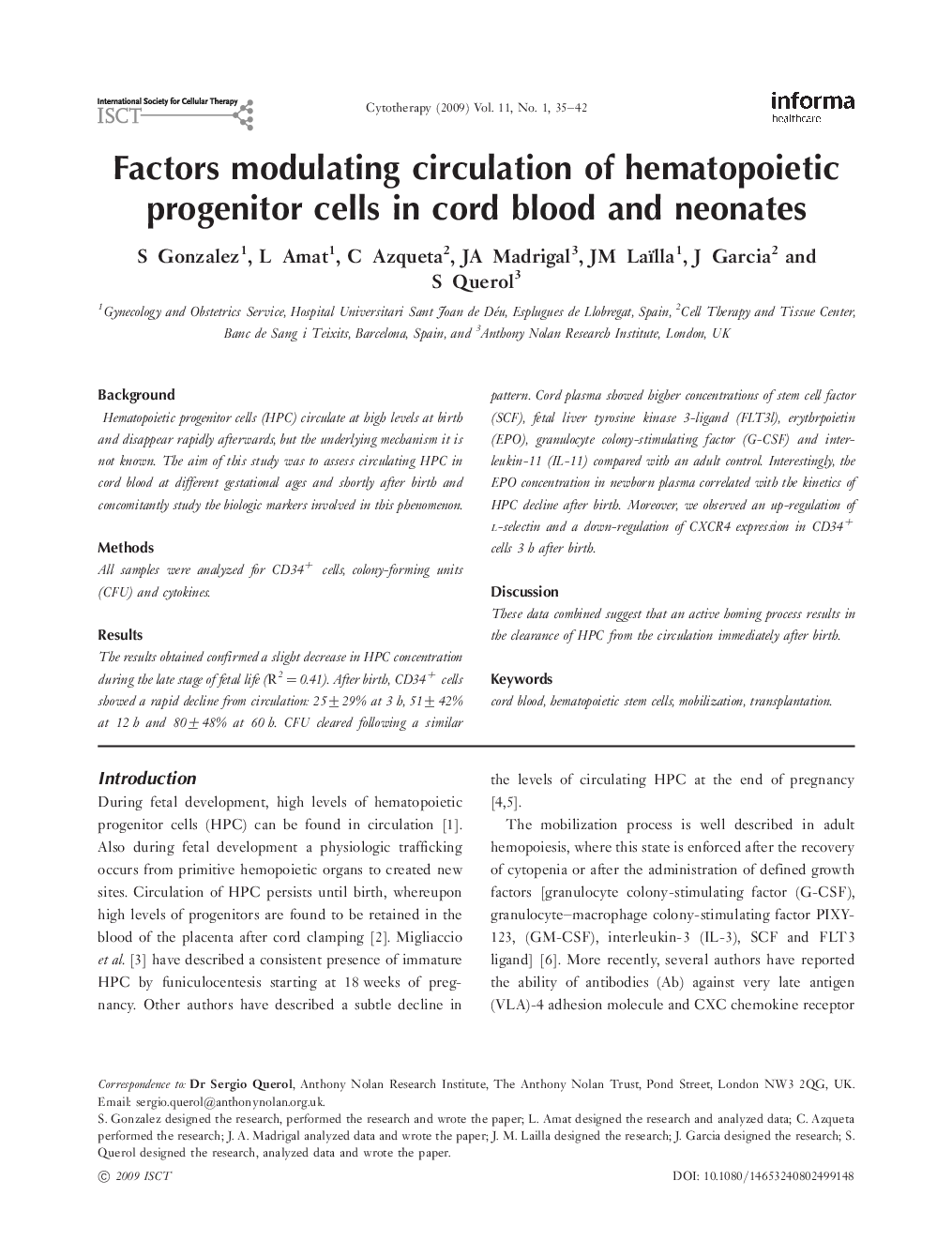| Article ID | Journal | Published Year | Pages | File Type |
|---|---|---|---|---|
| 2172280 | Cytotherapy | 2009 | 8 Pages |
BackgroundHematopoietic progenitor cells (HPC) circulate at high levels at birth and disappear rapidly afterwards, but the underlying mechanism it is not known. The aim of this study was to assess circulating HPC in cord blood at different gestational ages and shortly after birth and concomitantly study the biologic markers involved in this phenomenon.MethodsAll samples were analyzed for CD34+ cells, colony-forming units (CFU) and cytokines.ResultsThe results obtained confirmed a slight decrease in HPC concentration during the late stage of fetal life (R2 = 0.41). After birth, CD34+ cells showed a rapid decline from circulation: 25 ± 29% at 3 h, 51 ± 42% at 12 h and 80 ± 48% at 60 h. CFU cleared following a similar pattern. Cord plasma showed higher concentrations of stem cell factor (SCF), fetal liver tyrosine kinase 3-ligand (FLT3l), erythrpoietin (EPO), granulocyte colony-stimulating factor (G-CSF) and interleukin-11 (IL-11) compared with an adult control. Interestingly, the EPO concentration in newborn plasma correlated with the kinetics of HPC decline after birth. Moreover, we observed an up-regulation of l-selectin and a down-regulation of CXCR4 expression in CD34+ cells 3 h after birth.DiscussionThese data combined suggest that an active homing process results in the clearance of HPC from the circulation immediately after birth.
